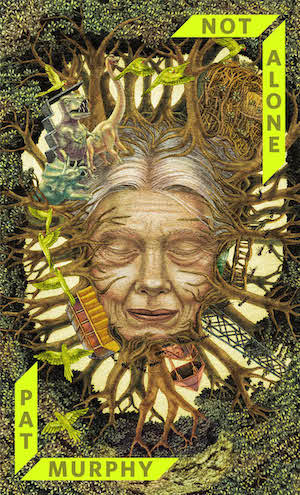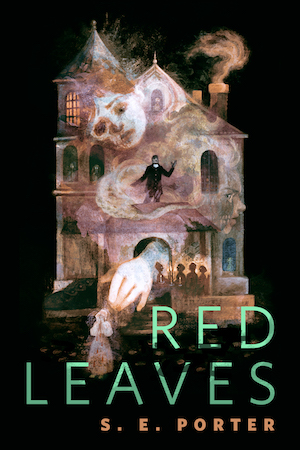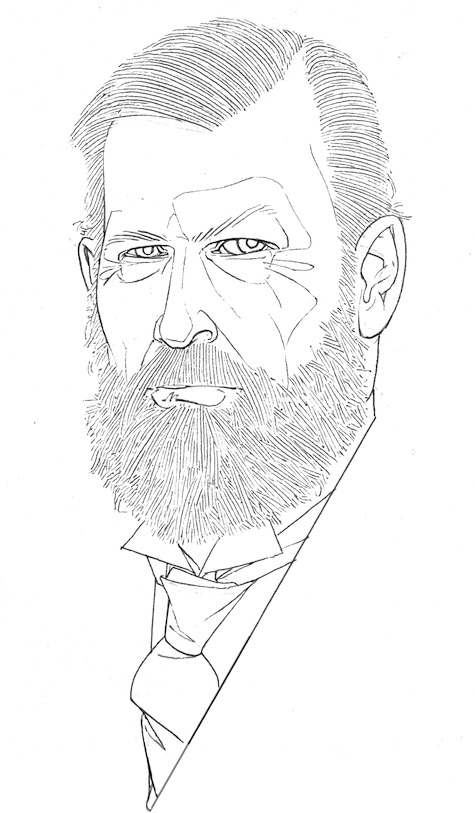Bram Stoker’s interest in the macabre seems to have been with him from his youth. While at Trinity College, Dublin, he became a member of the University’s Philosophical Society, and the first paper he presented was “Sensationalism in Fiction and Society.” After graduation, he worked as a theater critic for the Dublin Evening Mail. The paper was owned by Sheridan Le Fanu, who ended up being a far larger influence on Stoker’s creative life a few years later. It was Le Fanu’s story Carmilla, about a female vampire preying on a lonely woman, which seems to lay the groundwork for the vampire fiction after it, most directly Stoker’s famous novel.
Le Fanu’s story is told as the casebook of Dr. Hesselius, the first occult doctor in literature. The protagonist, Laura, is a young woman who at first thinks the vampiric attacks are nightmares, and later begins to draw connection between them and the highly sexualized relationship she shares with her friend Carmilla. Laura and her family are aided by a vampire expert, Baron Vordenburg, who is a direct inspiration for Stoker’s Van Helsing. Laura and Carmilla’s extremely intense friendship was also an influence on Lucy and Mina’s relationship.
Stoker combined elements of this story with two other popular vampire stories—Varney the Vampire, which presented Varney as a sympathetic character, and more immediately, John Polidori’s “The Vampyre,” which featured George Gordon, Lord Byron Lord Ruthven, a refined, aristocratic ghoul who literally and metaphorically drains everyone he meets. Stoker also drew on the theatricality of the actor Henry Irving, who became Stoker’s close friend (Stoker actually tailored the character of Dracula in hopes that his friend would play him in a stage adaptation) and wrote the book in a gothic style that put it in the same school as Mary Shelley and Emily Bronte.
Having said all of this, however, Dracula’s mood and tone are completely unique. It draws on its own tensions, and uses each limited point of view to terrifying effect as the reader pieces Dracula’s story and intent together. The clash Stoker creates between the innocence of Jonathan and Mina and the utter ruthlessness of Dracula, lodges in the reader’s mind long after the book is finished. Possibly because it employs truly horrific supernatural elements, it is able to be far more haunting than other gothic romances of the time.
Dracula was released in 1897 and was immediately successful with critics, but it never really became a bestseller during Stoker’s lifetime. It wasn’t until F.W. Murnau’s Nosferatu was released in 1922 that the book began to do well. Murnau had never secured any rights to the story, so Stoker’s widow took legal action after the film’s release, and the ensuing publicity reignited interest in the book. The story of Dracula has now been adapted over 200 times—second only to Sherlock Holmes—and every piece of vampire-influenced pop culture finds itself reckoning with its forefather, however clumsily.
Stoker himself went on to write more books (one of which, Lair of the White Worm, was adapted into a hilarious Hugh Grant vehicle) but none of them really grabbed the public’s attention like Dracula. At the time of its writing, the book’s vampirism could be seen as a metaphor for colonialism, syphilis, and closeted homosexuality, and has since been used to talk about feminism, heroin addiction, AIDs, and true love. Stoker’s story, with the terrifyingly charismatic figure at the center, became a screen for each new generation to project its fears upon.
This article was originally published November 8, 2014.










